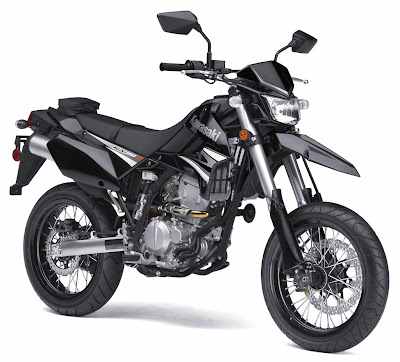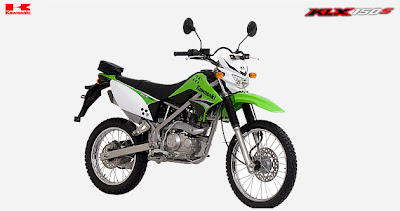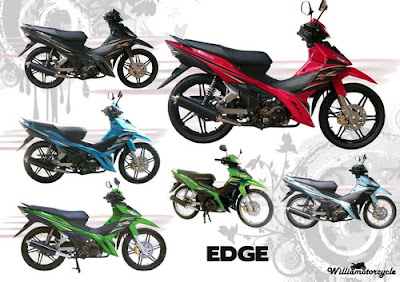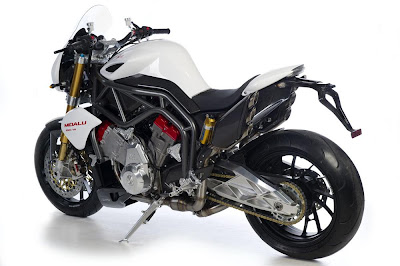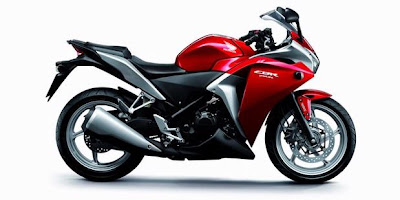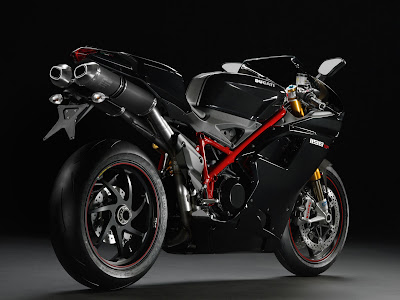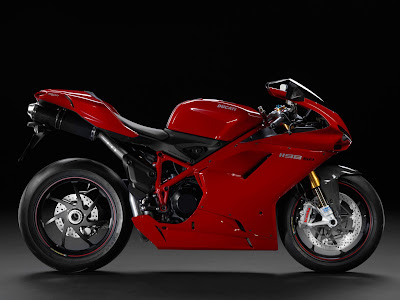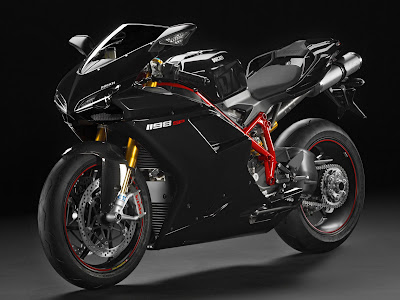he fuel-injected, 779cc, alloy perimeter-framed four-cylinder has been on sale in Europe since last year, and it’s being touted as a compromise between the less-powerful 600cc middleweights and the bigger literbikes like Yamaha’s R1-based FZ1 and Kawasaki’s Z1000.
The FZ8 actually has much in common with the FZ1. Its engine – six-point mounted as a stressed, chassis-reinforcing member – shares the same 53.6mm stroke, but its bore size is 9mm smaller, at 68mm, instead of 77mm as found on the FZ1.
The FZ8’s 464-lb curb weight comes in at mere 23 lbs under its 487-lb liter-sized big brother. Part of the weight savings is nothing more than a slight loss of fuel capacity, as its 4.5 gallon fuel capacity is about one quart less than the FZ1’s.
Likewise, the FZ8’s twin front disc brake specs are nearly identical, at 310mm front compared to the 320mm discs for the FZ1. A single 267mm disc in back contrasts with a 245mm rear disc on the FZ1. Both are pinched by similar four-piston front, and single-piston rear calipers.
Both ride on a similar 43mm inverted fork and a link-type Monocross rear shock, sharing a 57.5-inch wheelbase. The FZ8’s suspension is adjustable only for rear preload.
The FZ8 is not merely a gelded and cheaper FZ1. It utilizes a new crankshaft and new four-valve-per cylinder head instead of the five-valve-per-cylinder head of the FZ1 – which is itself an adaptation from the first-generation R1.
The new head breathes through 26mm intake valves and 22mm exhaust valves, a 12:1 compression ratio instead of the FZ1’s 11.5:1, and cam profiles tuned toward a fatter midrange. Yamaha boasts also that the intake funnels for cylinders two and three are 25mm longer than those of the two outside cylinders to help achieve a broad torque curve. In all, the package promises to be at least quasi-unique, and certainly street worthy.
 PT Bajaj Auto Indonesia (BAI) launched the Pulsar 135 LS, which is only 135 cc engine capacity. So with a small machine body became light, making this bike called Light Sport.
PT Bajaj Auto Indonesia (BAI) launched the Pulsar 135 LS, which is only 135 cc engine capacity. So with a small machine body became light, making this bike called Light Sport. Technical Specifications of Bajaj Pulsar 135 LS
Technical Specifications of Bajaj Pulsar 135 LS




